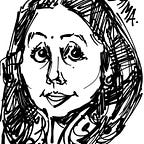Execution rigor is key to survival for an organization. The pace of change, complexity and volume of change in both technology and business operating models has made consistent and sustainable execution challenging.
Without strategy, execution is aimless. Without execution, strategy is useless
How we deliver value has become as much as what goes into the product. Waterfall, Agile, Lean, DevOps, SRE tooling and practices are recent innovations in the delivery lifecycle and productivity area.
Agile
The agile approach has proven to be of huge value but there are weaknesses that we need to move beyond. The first is to offer companies an agile framework (such as SAFe or Scrum at Scale). These tend to be rule books that run counter to the idea of agility. However, they do provide common work methods that can be valuable.
The second is to create a workforce with certifications that don’t dive deep enough into the new skills needed in agile settings. “Students: can acquire a ”masters” level of certification in agile techniques, like scrum, after only two days of study.
Lean thinking
Lean thinking and practices originated in manufacturing assembly lines and provided workers with tools to improve quality, consistently over time. Lean began as an improvement framework but has become synonymous with waste reduction. And that has often meant reduced headcount during lean transformations or other disruptive measures that reduce trust at work.
Lean startup is another lean tool. It refers to iterating product development through customer interactions with a minimum viable product. In our experience MVPs in an enterprise setting cause more trouble than value because they flood the innovation funnel with too much work,
Lean UX has proved its value. Lean UX is essentially a tool for rapid design and redesign based on user feedback, as opposed to the use of requirements documents linked to deliverables.
You can see from this that lean is a triple edged sword. For some it means cuts, for others it means a new way to design products, particularly software, and for others, it is creating too much work.
Flow
Agile product mindset with Flow based on value mixes the best of Agile and value based delivery model. Flow works at a strategic and practical level but also at an emotional and social level. One of its unique elements is a strong focus on creating much improved social interaction and drawing out the collective intelligence of teams.
Flow is an end-to-end philosophy for how to discover, manage and deliver value.
Flow also refers to the flow of value in an organisation. We are constantly thinking about the real meaning of value and helping clients to discover new sources. Flow works on the following key principles -
- The visual principle
All of the work in Flow is visualised. We create wall visualisations of markets, customers, assets, innovations and ecosystems; as well as work portfolios, dependencies, risks, issues and even social interaction. The purpose of visualisation is to bring people together in social settings. It involves learning how to align the needs of a changing market with the innovation capacity of the firm. - Value management
In recent years, lean startup has contributed to bloated work portfolios and not contribute to corporate goals. To counter this and to rationalise work, we use a number of tools: The Executive Portfolio Wall, a Risk and Issues Wall, Dependency Walls, and Walls that foster the collective spirit of the teams (the Cool Wall, Thank You Wall, Jobs Wall). - Value delivery
Many IT shops are now using techniques like continuous integration, DevOps, microservices, automated and testing. There is still a lot that can be done to optimise processes such as bringing more customer feedback loops so that work in progress is tested against real needs, using kanban to limit work in progress, and integrating IT more with product teams to make techniques like lean UX more effective - Flow’s Generative Operating Model
Many of the issues addressed by Flow are in the context of a transformation from an old way of working, full of core platform incompatibilities, to a new and more digital structure of work. That transformation is often referred to as a switch from an AS-IS state to a future or target operating model (TOM). We argue that fixed future states are not helpful because in reality the early stages of a transformation should be spent trying to understand your context, and part of that means understanding how your strategy and market opportunity will evolve and hence what new skills you need both to transform and to be successful in future.
Companies develop a generative operating model i.e One that allows them to develop the skills to understand context, change and adapt towards a moving future state
- Lighthouse projects and transformation sprints
In that context, Flow developed the idea of a transformation sprint and a lighthouse project. The sprint is an agile concept. It means time-boxing an initiative (in our case 4 weeks to identify key issues in a transformation) and delivering value early and quickly. Effectively, we take just 4 weeks to create a design for solving a transformation problem. We do it in six overlapping phases, more on which can be found in the book. Lighthouse projects are the output of the sprint. They are projects that can affect a structural change for the enterprise, demonstrate the value of new ways of working, early and often, and act as a learning environment so the team can flesh out the generative operating model.
Finally Scale down to skill up to deliver bite sized chunks and allow teams to prepare for the broader transformation
